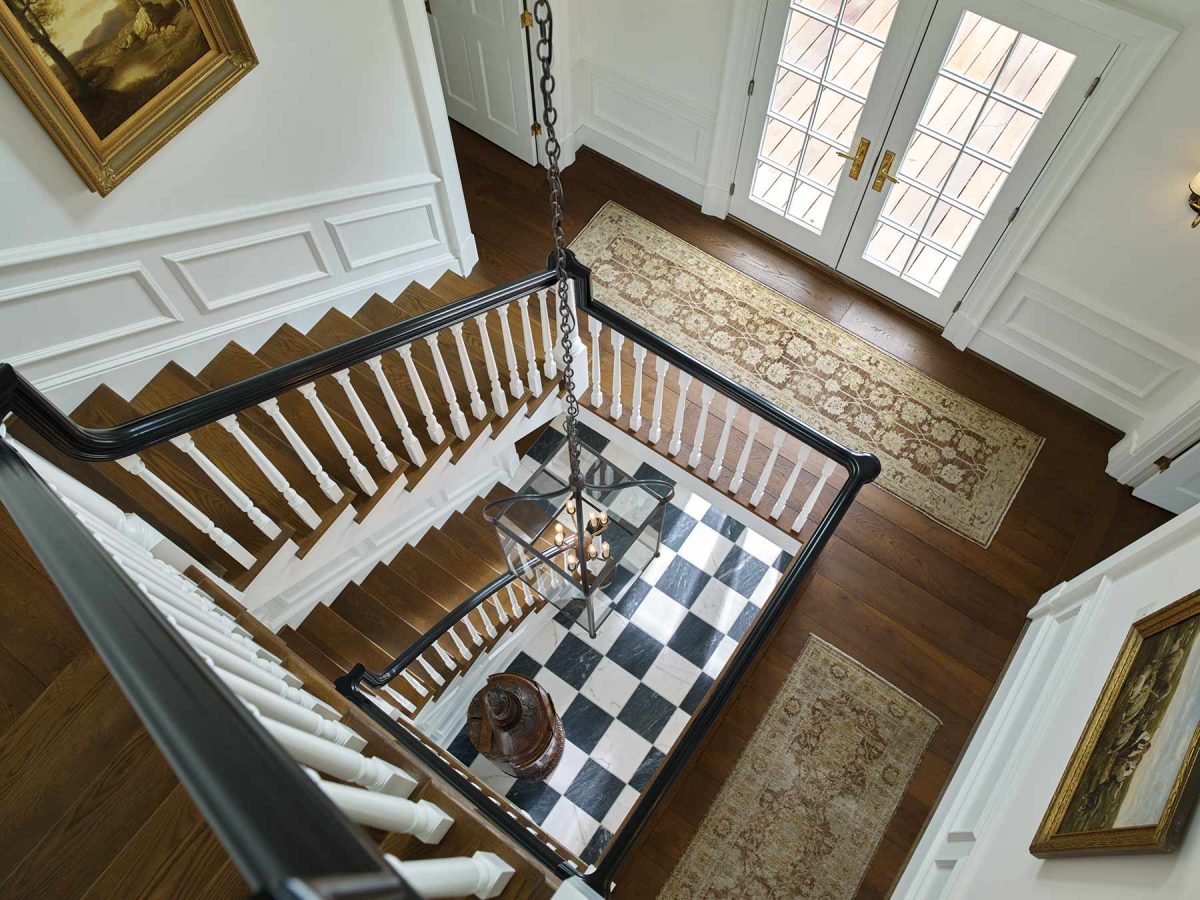The HeartPine Company made its name crafting custom products from stuff a lot of people would throw away. It’s that commitment to finding beauty that has allowed the firm to thrive for 25 years.
“I think there are two or three things that make it different,” says Debra Kirschnick, who directs the company’s sales and marketing efforts. “One is that [the owners] really treat you like family. Two, they give you autonomy. They know their employees want to do what’s best for the company, understand what your strengths are, and let you make decisions.” The third thing, Kirschnick says, is how hands-on ownership remains even after a quarter decade.
Richard Morgan Sr. launched the HeartPine Company in 1999, selling antique heart pine flooring to discerning builders, designers, and homeowners. Operating out of Nelson County, the firm’s one and only product when it launched was heart pine. Richard Morgan Jr. joined his father’s company after graduating from college and dabbling on his own in the wood biz for a few years.
“It just started when I was renovating an old farmhouse,” Morgan Sr. says. “The house was from the early 1800s, and I was trying to find material. I had been farming full-time, and it just mushroomed from there.”
From the beginning, HeartPine was a manufacturing-intensive business, with a focus on milling and kilning products to the high-level specs the Morgans and their customers demanded. The company grew quickly, hiring more people to operate its at-the-time small manufacturing facility. The Morgans hired another sales person and then another, Kirschnick. Today, HeartPine employs 35 people across its 35,000 square-foot manufacturing plant in Amherst and storefront showroom on Market Street in downtown Charlottesville.
HeartPine has received multiple local awards and was recently featured on “World’s Greatest Television,” a series highlighting successful family-owned businesses. In addition to serving clients in the local area, HeartPine ships product nationwide.
With natural wood more expensive than vinyl flooring and other competitive products, HeartPine serves primarily high-end builders and designers, but the company also sells some flooring directly to consumers. While Kirschnick says pine remains the firm’s “heart and soul,” HeartPine moved into reclaimed oaks and hickories early on, then into a line of newly sawn wood. Today, the it sells European and domestic oak in the form of not only flooring, but also custom beams, stair treads, and millwork. A line of French oak—distinct from European oak—is coming online next.
Everything is bespoke, and two products are rarely, if ever, the same. Sourcing is a constant challenge. Consumer preferences make things even trickier for wood-makers. While buyers for years were hooked on gray tones, they are now moving into more organic colors like browns and sandy tans, according to Kirschnick.
“We’re all still really drawn to the antique woods,” she says—the Morgans have it throughout their own homes. “The antique part of the business is complex. The buying is very difficult because people don’t always tell you the truth about what they have.”
That’s where the Morgans and their team excel, verifying every piece themselves with no regulatory authority providing much support, Kirschnick says. HeartPine’s book of business is still about 50 percent reclaimed wood, 35 percent European oak, and 15 percent newly sawn wood (mostly domestic oak). Kirschnick expects the new French oak line to take over about 10 percent of the sales mix. Reclaimed wood, which remained relatively price-stable through the COVID-19 pandemic and is actually less expensive now than it was five years ago due to sourcing efficiencies, shifts in pricing strategies, and competitive pressures, is about 30 percent pricier than newly sawn wood.
Where in the United States does heart pine fare best? In the areas of the country where it once dominated the forests, an expanse stretching millions of acres from the southern part of Virginia, down to Florida, and across the plains to Texas.
“Heart pine actually built this country,” Kirschnick says. “As soon as Jamestown was settled, the king put a mark on the pine trees and said, ‘These belong to me.’”
